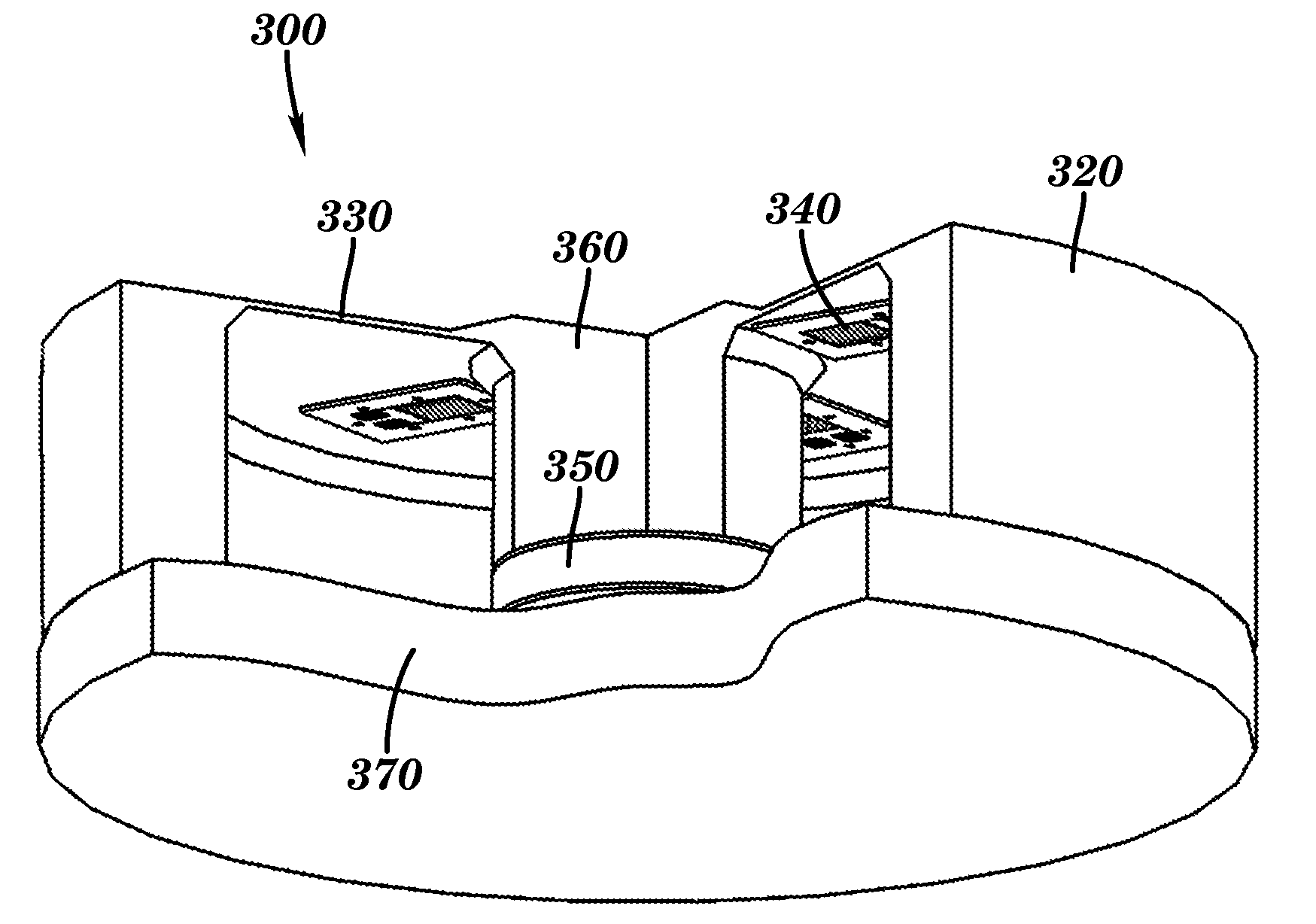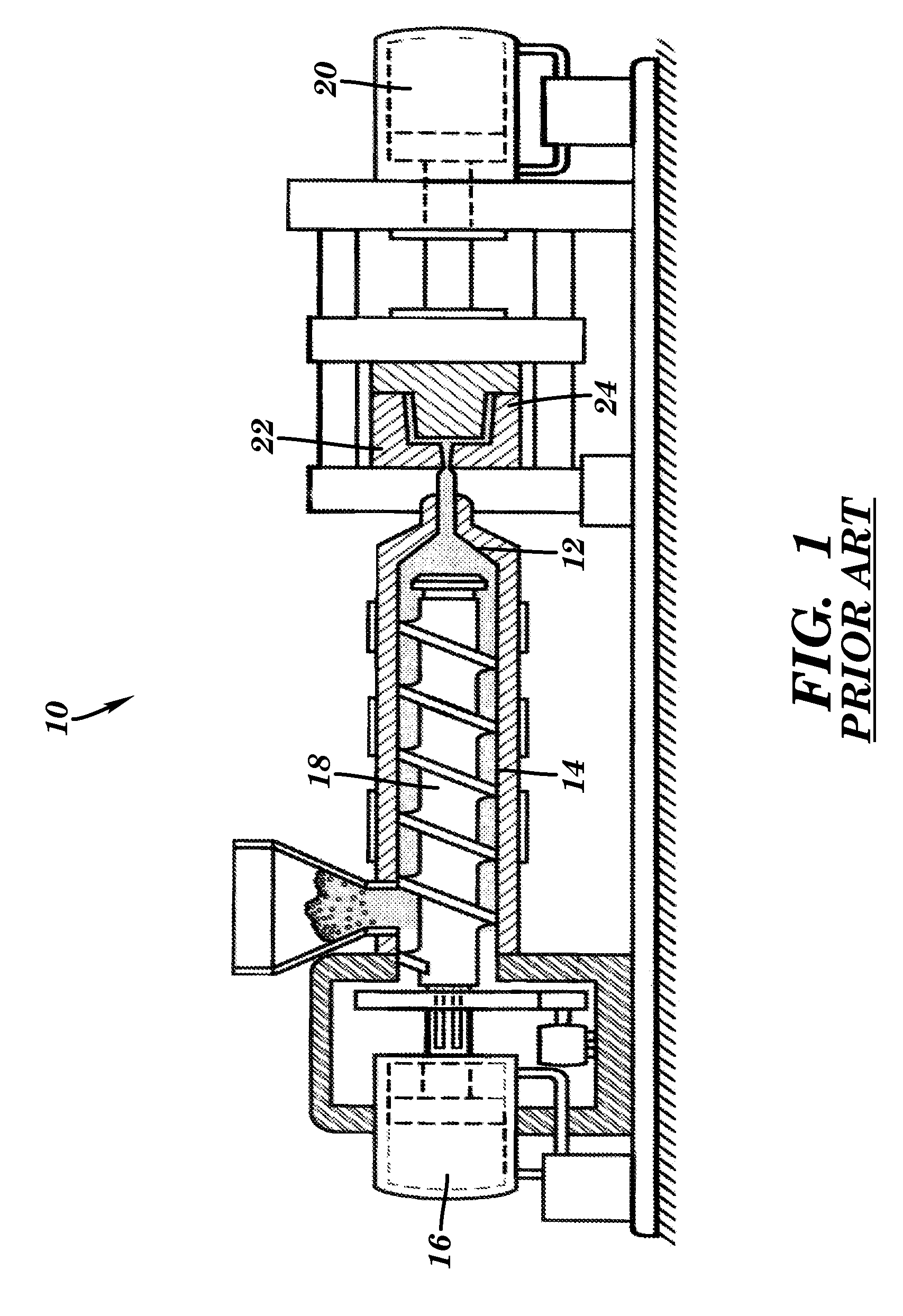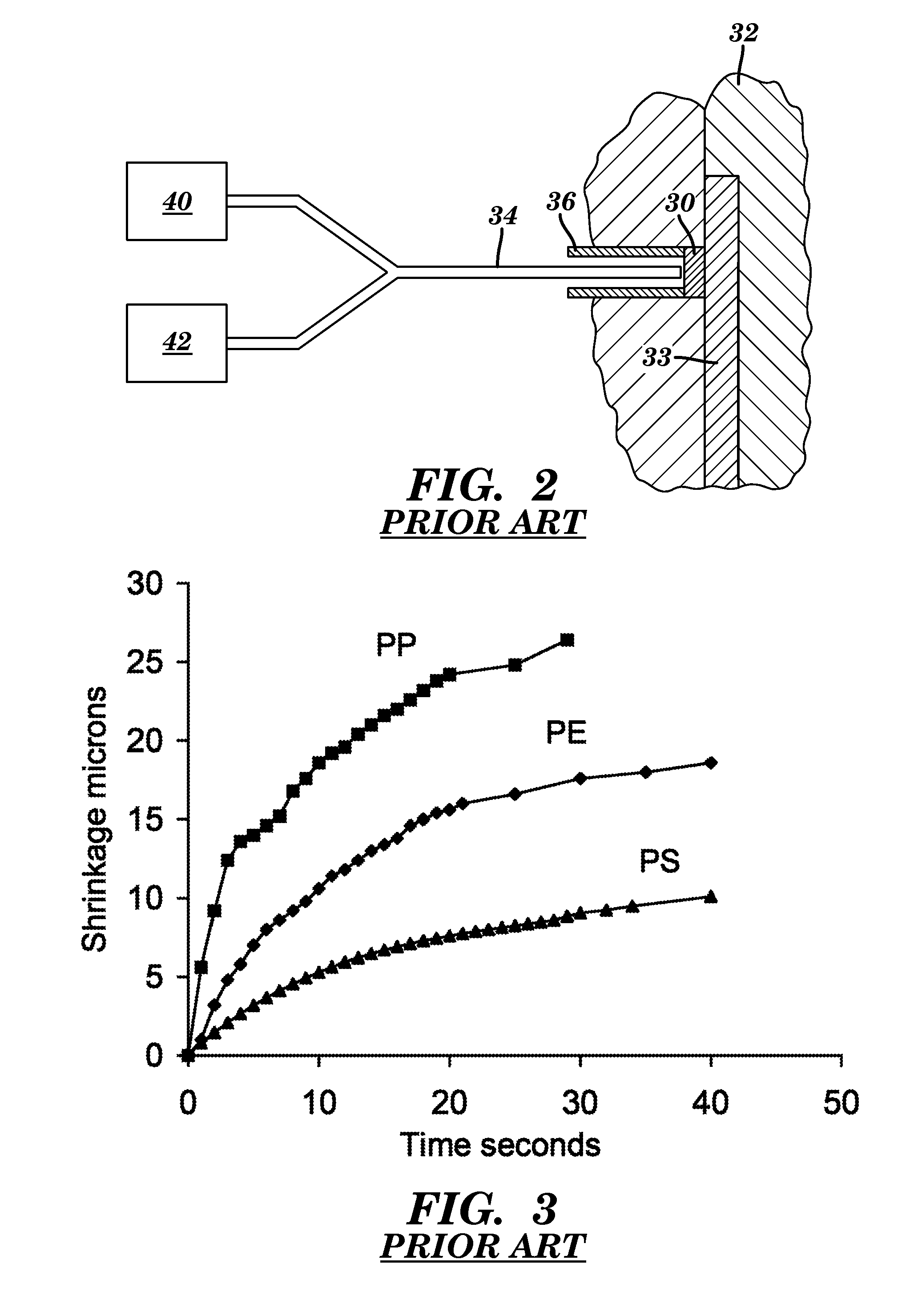Methods for forming injected molded parts and in-mold sensors therefor
- Summary
- Abstract
- Description
- Claims
- Application Information
AI Technical Summary
Benefits of technology
Problems solved by technology
Method used
Image
Examples
Embodiment Construction
[0047]One of the challenges in the injection molding of plastic parts is the control required to produce parts with desired dimensions reproducibly. In-mold shrinkage is the major driver of final part dimensions, and it is a function of cavity pressures, mold and melt temperatures, cycle times, and material properties among other factors. Shrinkage can be very difficult to predict, and particularly, control for tight tolerance in multi-cavity operations.
[0048]While prior art sensors prove effective as process control variables, they are in fact poor estimators of the manufactured part quality and advances in machine control have not kept pace with part design requirements. Perhaps surprisingly, the final part dimensions are not precisely known during the product design and mold tooling phases. The control of shrinkage can be difficult, especially in tight tolerance and multi-cavity applications. Molding operations are greatly impaired by the lack of direct observability and controll...
PUM
| Property | Measurement | Unit |
|---|---|---|
| Temperature | aaaaa | aaaaa |
| Force | aaaaa | aaaaa |
| Pressure | aaaaa | aaaaa |
Abstract
Description
Claims
Application Information
 Login to View More
Login to View More - R&D Engineer
- R&D Manager
- IP Professional
- Industry Leading Data Capabilities
- Powerful AI technology
- Patent DNA Extraction
Browse by: Latest US Patents, China's latest patents, Technical Efficacy Thesaurus, Application Domain, Technology Topic, Popular Technical Reports.
© 2024 PatSnap. All rights reserved.Legal|Privacy policy|Modern Slavery Act Transparency Statement|Sitemap|About US| Contact US: help@patsnap.com










